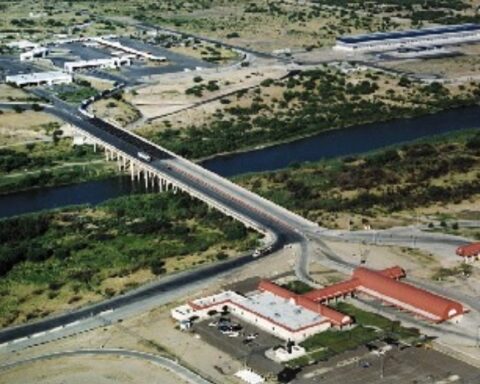The United States plans to invest billions in American-made cranes and cybersecurity-related measures for its ports.
In an executive order, the Biden administration committed to spend $20 billion on the domestic production of cranes used at U.S ports. There is a concern that Chinese-made cranes, which are used prevalently by American ports have advanced software that could pose a security risk.
Shipping cranes made in China make up the largest share of the global market and nearly 80% of cranes used at U.S. ports.
Funds to finance the domestic production of cranes will come from the Bipartisan Infrastructure Bill and the Inflation Reduction Act. PACECO Corp., a U.S.-based subsidiary of Japan’s Mitsui E&S Co. will domestically manufacture the cranes.

“PACECO intends to partner with other trusted manufacturing companies to bring port crane manufacturing capabilities back to the U.S. for the first time in 30 years, pending final site and partner selection,” the Biden administration said in a statement.
The order also calls on the U.S. Coast Guard to issue a Maritime Security Directive on cyber risk management actions for Chinese-manufactured ship-to-shore cranes located at commercial U.S. ports deemed strategic to American national security.
“Owners and operators of these cranes must acknowledge the directive and take a series of actions on these cranes and associated Information Technology (IT) and Operational Technology (OT) systems,” the Biden administration said.
President Biden’s order also gives the U.S. Department of Homeland Security’s authority to directly address maritime cyber threats through cybersecurity standards.
The U.S. Coast Guard will now have the authority to respond to malicious cyber activity in the U.S. Marine Transportation System, which is comprised of over 25,000 miles of navigable waterways and harbors, 239 locks at 193 locations, hundreds of bridges and 8,477 U.S. waterway facilities, including docks and locks.
The Coast Guard can now require vessels using the MTS and waterfront facilities to address cyber conditions that may endanger the safety of a vessel, facility or harbor.
The order also requires the mandatory reporting of cyber incidents – or active cyber threats – endangering any vessel, harbor, port, or waterfront facility.
Additionally, the Coast Guard can now control the movement of vessels that present a known or suspected cyber threat to U.S. maritime infrastructure and inspect vessels and facilities that pose a threat to American cybersecurity interests.
All news and information on this site is provided by the team at Strategic Partnerships, Inc. Check out this short 1-minute video that provides a quick overview of how we work with clients.













